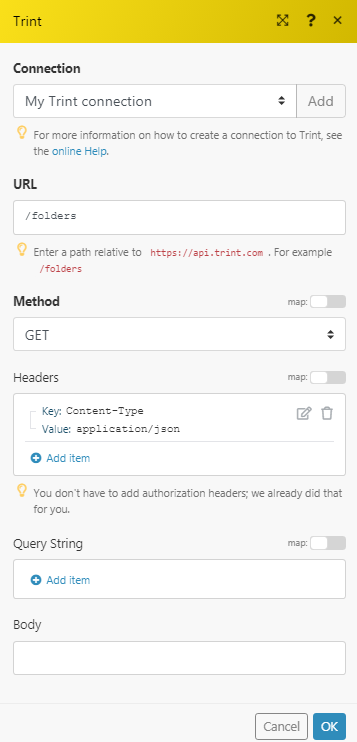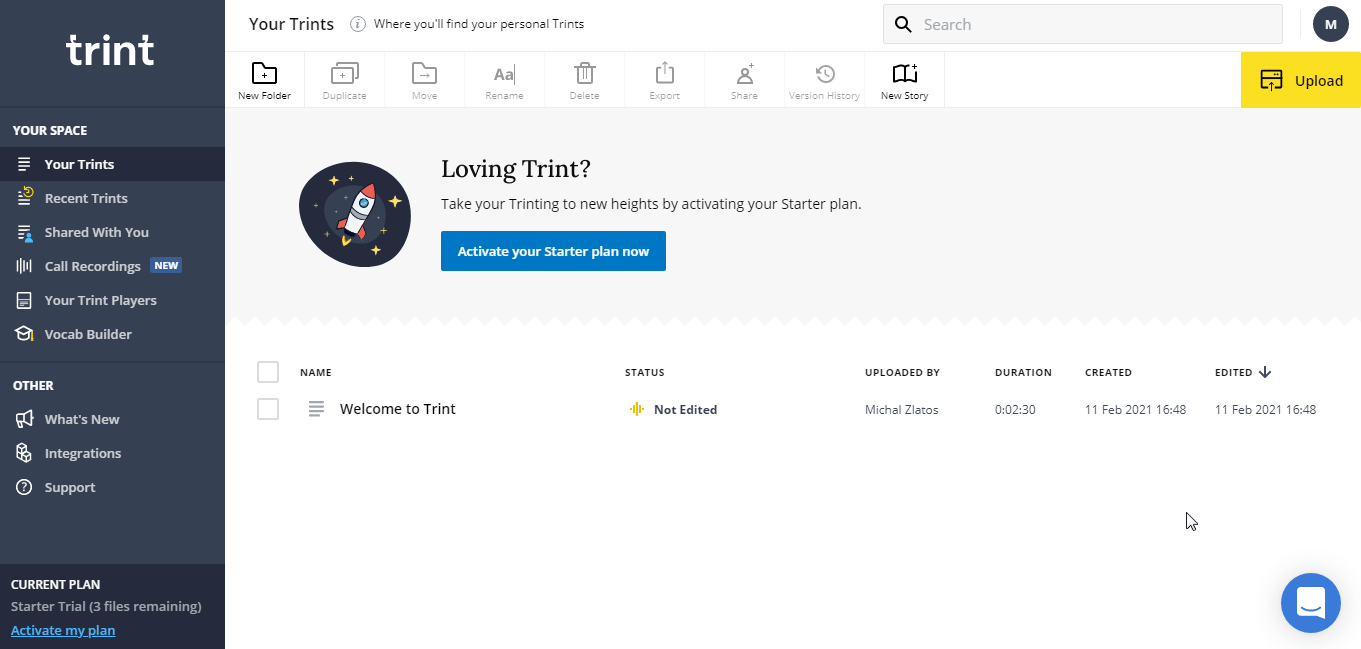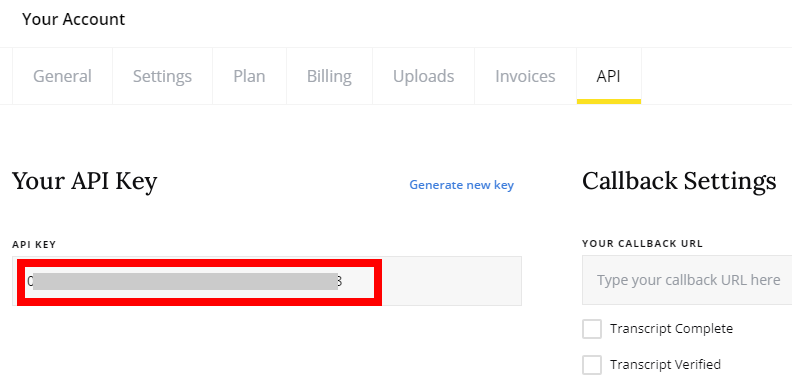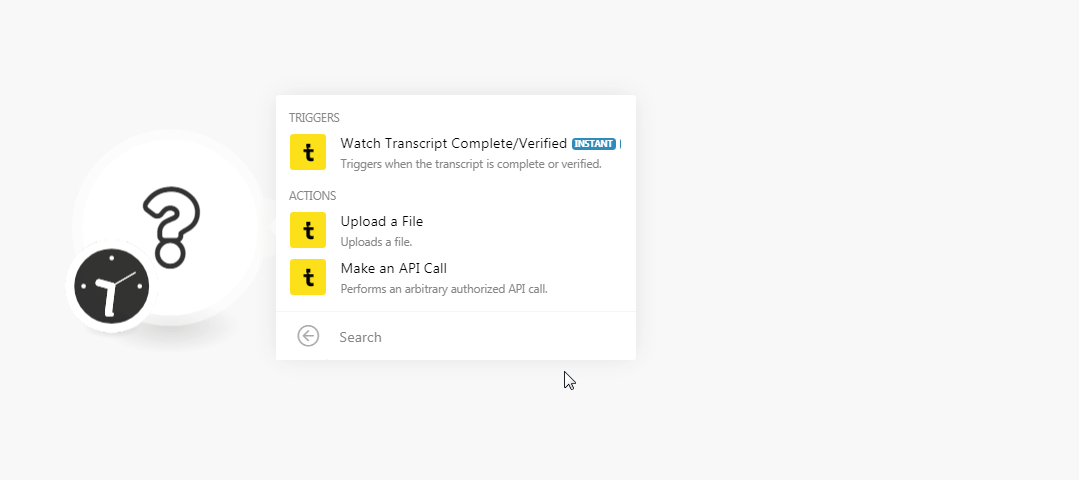| Active with remarks |
|---|
| This application needs additional settings. Please follow the documentation below to create your own connectionUnique, active service acces point to a network. There are different types of connections (API key, Oauth…). More. |
The Trint modulesThe module is an application or tool within the Boost.space system. The entire system is built on this concept of modularity. (module - Contacts) More allow you to monitor and upload files in your Trint account.
Prerequisites
-
A Trint account
In order to use Trint with Boost.spaceCentralization and synchronization platform, where you can organize and manage your data. More IntegratorPart of the Boost.space system, where you can create your connections and automate your processes. More, it is necessary to have a Trint account. You can create a Trint account at app.trint.com/signup.
![[Note]](https://docs.boost.space/wp-content/themes/bsdocs/docs-parser/HTML/css/image/note.png) |
Note |
|---|---|
|
The moduleThe module is an application or tool within the Boost.space system. The entire system is built on this concept of modularity. (module - Contacts) More dialog fields that are displayed in bold (in the Boost.space Integrator scenarioA specific connection between applications in which data can be transferred. Two types of scenarios: active/inactive. More, not in this documentation article) are mandatory! |
To connect your Trint account to Boost.space Integrator you need to obtain the API Key from your Trint account and insert it in the Create a connection dialog in the Boost.space Integrator module.
-
Log in to your Trint account and open your Dashboard.
-
Click your profile icon (top-right corner) > Settings > API > Generate new key.
-
Copy the API Key to your clipboard.
-
Go to Boost.space Integrator and open the Trint module’s Create a connection dialog.
-
In the Connection name field, enter a name for the connection.
-
In the API Key field, enter the API key copied in step 3, and click Continue.
The connection has been established.
See the Setting Up the Webhooks to add the webhooksA webhook is a way for an app to send real-time information to a specific URL in response to certain events or triggers. in your Trint account.
TriggersEvery scenario has a trigger, an event that starts your scenario. A scenario must have a trigger. There can only be one trigger for each scenario. When you create a new scenario, the first module you choose is your trigger for that scenario. Create a trigger by clicking on the empty module of a newly created scenario or moving the... when the transcript is complete or verified.
|
WebhookA webhook is a way for an app to send real-time information to a specific URL in response to certain events or triggers. Name |
Enter a name for the webhook. |
|
Connection |
Uploads a file.
|
Connection |
|
|
File Data |
Enter (map) the file data of the file you want to upload. |
|
File Name |
Enter the name of the file you are uploading. |
|
Langauge |
Enter the language in which you want to transcribe. |
|
UserCan use the system on a limited basis based on the rights assigned by the admin. More |
Enter the username to whom you want to attach the uploaded file. |
|
Metadata |
Enter the metadata that you want to include in the callback event. For example, the ID of a recordOne row in the Boost.space database. These are individual rows under spaces in each module. For example single products, but not their variants. More in your DB. |
|
Detect Speaker change |
Select the checkbox to automatically split paragraphs based on the change of speaker. |
|
Folder ID |
Enter the Folder ID to which you want to upload the file directly. |
|
Workspace ID |
Enter the Workspace ID to which you want to upload the file. |
Performs an arbitrary authorized API call.
|
Connection |
|
|
URL |
Enter a path relative to For the list of available endpoints, refer to the Trint API Documentation. |
|
Method |
Select the HTTP method you want to use: GET to retrieve information for an entry. POST to create a new entry. PUT to update/replace an existing entry. PATCH to make a partial entry update. DELETE to delete an entry. |
|
Headers |
Enter the desired request headers. You don’t have to add authorization headers; we already did that for you. |
|
Query String |
Enter the request query string. |
|
Body |
Enter the body content for your API call. |
The following API call returns all the folders from your Trint account:
URL:
/folders
Method:
GET

Matches of the search can be found in the module’s Output under BundleA bundle is a chunk of data and the basic unit for use with modules. A bundle consists of items, similar to how a bag may contain separate, individual items. More > Body.
In our example, 3 folders were returned:

-
Open the Watch module, establish a connection, click Save and copy the URL address to your clipboard.
-
Log in to your Trint account.
-
Click your profile icon > Settings > API.
-
In the Callback Settings section, enter the URL address copied in step 1 and select the events for which you want to receive the triggers.
You have successfully added the webhook.





